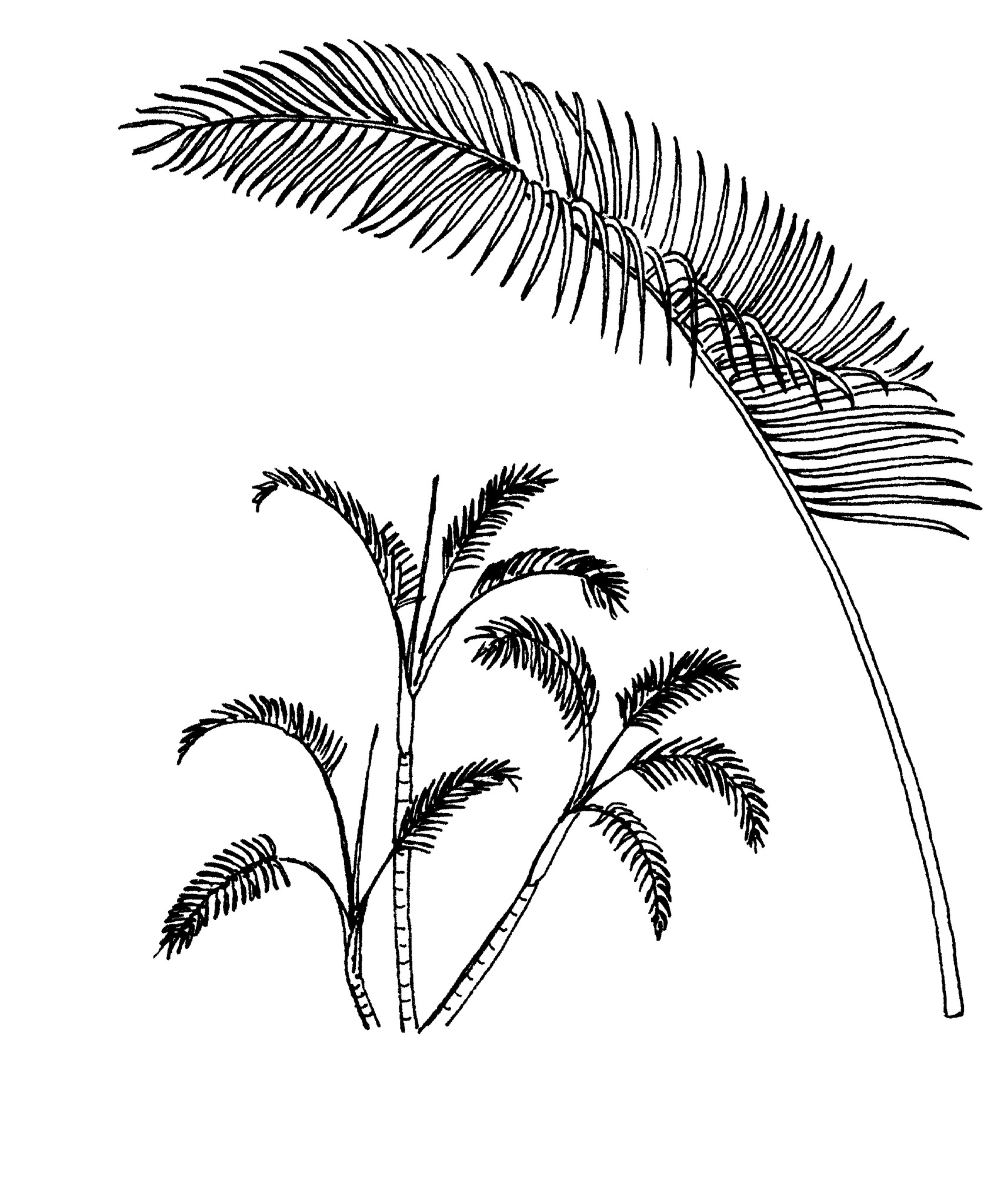
Perhaps from the Greek dyptein – to dip or dive.
Solitary or clustered spineless and toothless palms, trunks rarely underground or climbing (one species) and occasionally appearing to be dichotomously branched. Trunks usually with ring scars of old leaf bases. Crownshaft usually present. Leaves feather-shaped or pinnately ribbed. Leaflets narrow, arranged in a flat plane or plumose, ^-shaped. Leaf stalk absent, short or long, hairless, scaly or hairy. Flowers unisexual, both sexes on the same plant. Panicle usually among the leaves, rarely below them. Fruit spherical, ellipsoid to shuttle-shaped, often brightly coloured and containing 1 seed. [Chrysalidocarpus H. Wendl., Phloga Hook. f., Neodypsis Baill.]
A large genus with a few species well entrenched in cultivation because of their adaptability and ornamental features. Recently D. lastelliana (Baill.) Beentje & J. Dransfield, D. leptocheilos (Hodel) Beentje & J. Dransfield and D. madagascariensis (Becc.) Beentje & J. Dransfield have become popular in subtropical regions and have been trialled with some success in warm temperate zones. A number of other fine species await introduction. The generic delimitation of Dypsis was greatly expanded following recent monographic study.
Fresh seed usually takes 2-6 months to germinate.
An extremely diverse group of fan-leaved palms which is difficult to characterize generally; leaflets mostly ^-shaped.
140 species distributed in Madagascar, 2 on the Comoro Islands and one on Pemba Island.
Dransfield & Beentje (1995), Jones (2000 a, b).
Source: (2005). Arecaceae. In: . Horticultural Flora of South-eastern Australia. Volume 5. Flowering plants. Monocotyledons. The identification of garden and cultivated plants. University of New South Wales Press.
